FAQ's
Rug Cleaning & Repair FAQs
Welcome to RugMaster London’s expert FAQ page, designed to answer your most common questions about handmade rug cleaning, restoration, and repair. Whether you own an antique Persian rug or a contemporary handmade piece, we have the expertise to keep it beautiful for years to come.
What is the cost of oriental rug repair?
How much does oriental rug repair cost?
The cost depends on your rug’s material, type, damage extent, and craftsmanship required. High value, handmade rugs often need master restorers using premium materials and advanced techniques to fully restore them, which can be costly. Simpler repairs are more affordable and faster. At RugMaster London, we offer competitive pricing for professional oriental rug repair, cleaning, and restoration. Request a free, no-obligation quote today!
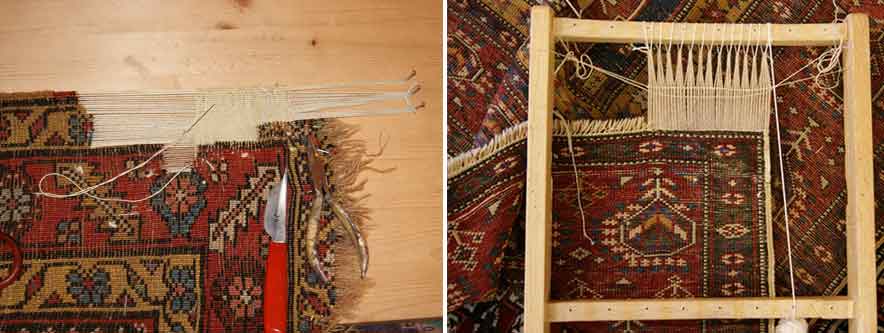
Where can I get professional handmade rug cleaning near me?
What is the safest way to clean a rug without a vacuum?
Vacuuming is usually safe for low-pile and flat-weave rugs, but rugs with long pile or delicate fibres such as silk or fur can snag or get damaged. Alternatives include gentle hand cleaning, dry cleaning powders, or handheld vacuums designed for fragile textiles. For delicate Persian or antique rugs, we strongly recommend professional cleaning to preserve colour and fibres.
How do I show the damage to my rug if I don’t have a professional camera?
Rug Colour Restoration
How effective is your rug colour restoration service?
Our expert artisans specialise in high-quality rug colour restoration using authentic dyes and advanced techniques. Many come from families with generations of rug restoration experience, combining traditional skill with modern innovation. We guarantee all colour restoration and repairs for one year, ensuring your rug looks vibrant while preserving its original character.
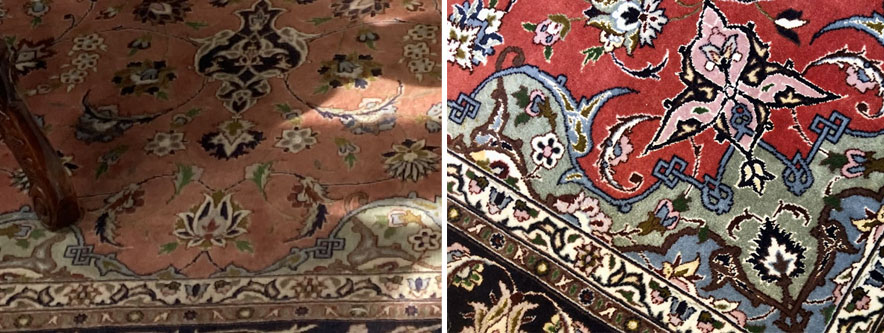
Can you fix colour bleeding issues in rugs?
Yes, we expertly treat colour bleeding caused by water or spills without harming your rug’s fibres. After stabilising the colours, we carefully re-dye affected areas with authentic, colourfast dyes. Our colour bleeding repair service is trusted by collectors and homeowners across London for Persian, oriental, and antique rugs, making us a trusted oriental rug repair company.
Rug Valuation
Do you assist with insurance claims for rug damage?
Absolutely. We have extensive experience working with insurance companies to support claims related to accidental damage, flooding, or stains. We provide professional rug valuation and can manage repairs or source replacements closely matching your original rug, helping you achieve the best possible outcome.
Making your Order
Can I buy rugs online from RugMaster London?
How long does it take to repair a rug?
Standard repairs usually take between 1 to 2 weeks once we receive your rug, but more complex restorations may take longer. We keep you informed throughout the process for complete peace of mind.
Delivery, Exchange & Returns
What are your rug delivery and collection policies?
We offer free rug collection and delivery within Greater London. For other locations, competitive rates apply. Please contact us for details or to schedule a service.
Do you offer rug exchange or part-exchange programmes?
Yes! Our unique part-exchange policy lets you trade in your old rug for discounts or even a free new rug from our extensive RugOutlet collection of over 10,000 rugs. Explore our constantly updated inventory for exclusive designs and offers.
Common Rug Problems & Expert Solutions
1. How do I prevent and treat moth damage on rugs?
Moth larvae thrive in dark, undisturbed areas and feed on wool and other natural fibres. Regular vacuuming, exposure to light, and professional cleaning help reduce the risk. If you spot holes or larvae, contact RugMaster immediately for treatment and repair.
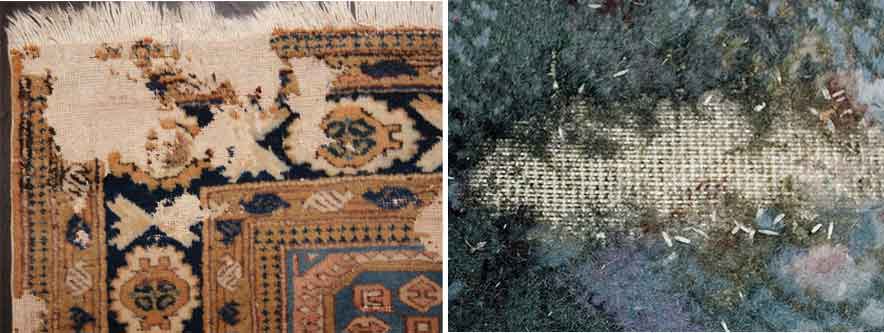
2. What causes water damage to rugs, and how can I avoid it?
Water damage often results from spills, flooding, or placing potted plants directly on rugs, which weakens the foundation and causes rot. Use plant stands and dry any wet areas promptly. Our restoration experts can repair water-damaged rugs to prevent further deterioration.
3. How do I fix threadbare or worn areas on rugs?
Threadbare patches develop through wear or delayed repairs. Our restorers can reinforce or reweave damaged areas, significantly extending your rug’s lifespan.
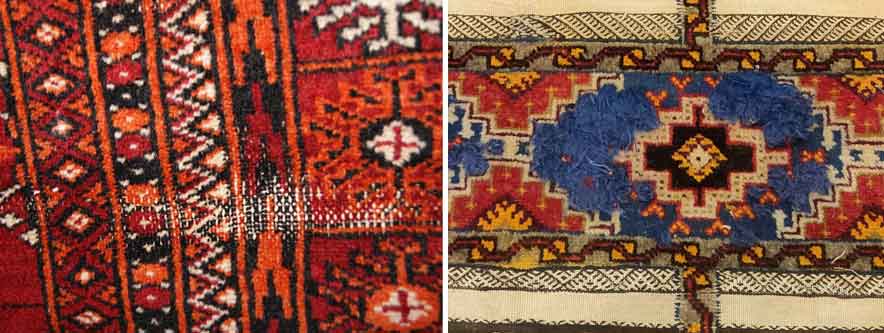
4. What should I know about damaged rug fringes?
Fringes are essential to a rug’s structure. Avoid vacuuming fringes directly and handle them gently. We offer professional fringe repair and replacement to preserve your rug’s integrity.
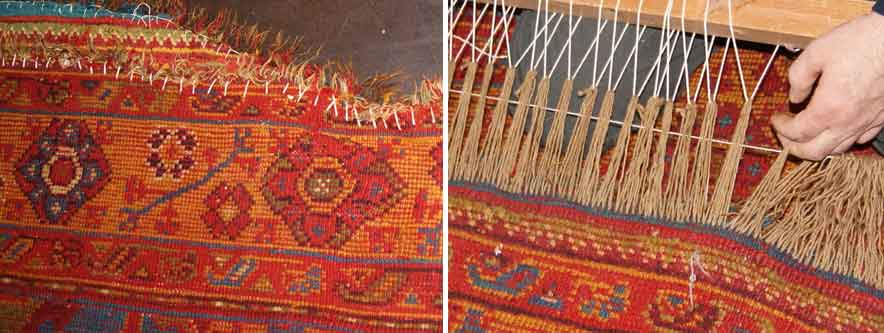
5. How can I remove food and wine stains from rugs?
Act quickly: blot spills immediately without rubbing. For stubborn stains, contact RugMaster for expert cleaning that safely removes stains without damaging fibres.